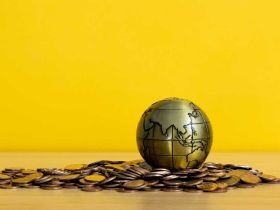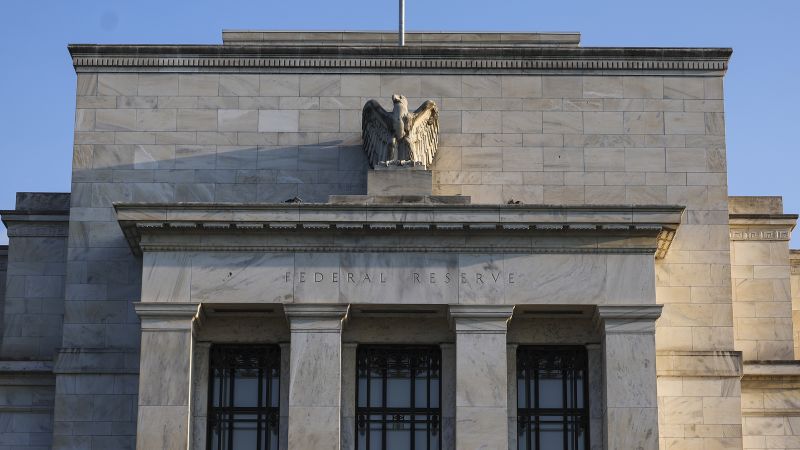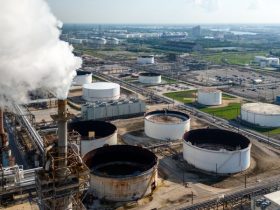The Federal Reserve is widely expected to announce Wednesday at the conclusion of its monetary policy meeting that it will hold interest rates steady, at their highest level in 22 years. That would be the second consecutive meeting the Fed keeps rates unchanged.
But that doesn’t mean the Fed is done hiking rates. Fed Chair Jerome Powell has made it clear that the US central bank wants to retain the option of another hike in case data show inflation’s descent has stalled.
“Given the uncertainties and risks, and how far we have come, the committee is proceeding carefully,” Powell said last month in New York. “We will make decisions about the extent of additional policy firming and how long policy will remain restrictive based on the totality of the incoming data, the evolving outlook and the balance of risks.”
An additional hike could come during the Fed’s December 12-13 meeting, and would likely be the last one in this cycle. Fed officials penciled in one more rate hike this year in the economic projections they released in September, but the central bank could forgo that final hike if data in the coming weeks show that inflation is continuing to cool, despite the economy expanding robustly and the job market remaining tight.
Still, hawkish Fed officials — those who back a more aggressive approach to addressing inflation — believe there’s more room to raise rates.
“Inflation remains well above the [committee’s] 2% target. Domestic spending has continued at a strong pace and the labor market remains tight,” Fed Governor Michelle Bowman said last month in Morocco. “This suggests that the policy rate may need to rise further and stay restrictive for some time to return inflation to the FOMC’s goal.”
The Fed’s preferred inflation gauge — the Personal Consumption Expenditures price index — cooled only slightly in September. The core index that strips out food and energy prices rose 3.7% for the 12 months ended in September, down from the 3.8% rate seen in August.
The Fed still seems to have a shot at defeating inflation without a sharp rise in unemployment, a scenario known as a soft landing.
But for now, the central bank is performing a balancing act between the risk that inflation could reaccelerate and the risk that its actions could inflict unnecessary economic damage.
Despite the Fed’s 11 rate hikes since March 2022, the US economy has displayed remarkable resilience. Economic growth expanded at an annualized 4.9% rate in the third quarter, the strongest rate in two years, with consumer spending, America’s economic engine, growing at its fastest pace since 2021.
Meanwhile, employers have continued to hire at a solid clip, adding 336,000 jobs in September, the biggest monthly gain since January, while the unemployment rate held at a low 3.8% that month. The Labor Department releases October data gauging the job market this Friday.
Worker filings for unemployment benefits remain at historically low levels, workers continue to rake in solid pay gains, and job openings continue to exceed the number of unemployed people actively seeking work by millions.
“Inflation has continued to come down, despite strong wage growth and a strong economy, which points to businesses that have been able to figure out how to deal with high costs, and I think inflation will keep coming down,” Luke Tilley, chief economist at Wilmington Trust, told CNN. “The economy is going through a soft landing.”
Instead of being in the throes of a recession, as predicted by economists in the aftermath of the spring banking crisis, the US economy is humming along just fine.
But that resilience will certainly be put to the test. Powell has said soaring bond yields are currently playing an important role in pulling on the economy’s reins, since Treasuries are the benchmark used to price debt. That means higher yields lead to higher rates on car loans and the cost of mergers and acquisitions, for example.
Banks have also toughened their lending standards and the resumption of student-loan payments last month means Americans’ budgets are getting squeezed. Some research also suggest that US consumers have likely already drawn down the excess savings many had accumulated during the pandemic.
The US economy is also contending with two wars, trillions in federal debt, a frozen housing market, and geopolitical tensions in the Middle East, which could cause oil prices to spike if the Israel-Hamas war escalates.
The economic landscape has clearly become more difficult since the beginning of the year, but some economists remain bullish on the economy’s resilience and inflation’s defeat.
“A resilient consumer and steady job market potentially could help the Fed pull off one of the greatest comebacks of all times — an economy that grows and reduces inflation,” wrote Nela Richardson, chief economist at payroll processor ADP, in a note.
Read the full article here













Leave a Reply